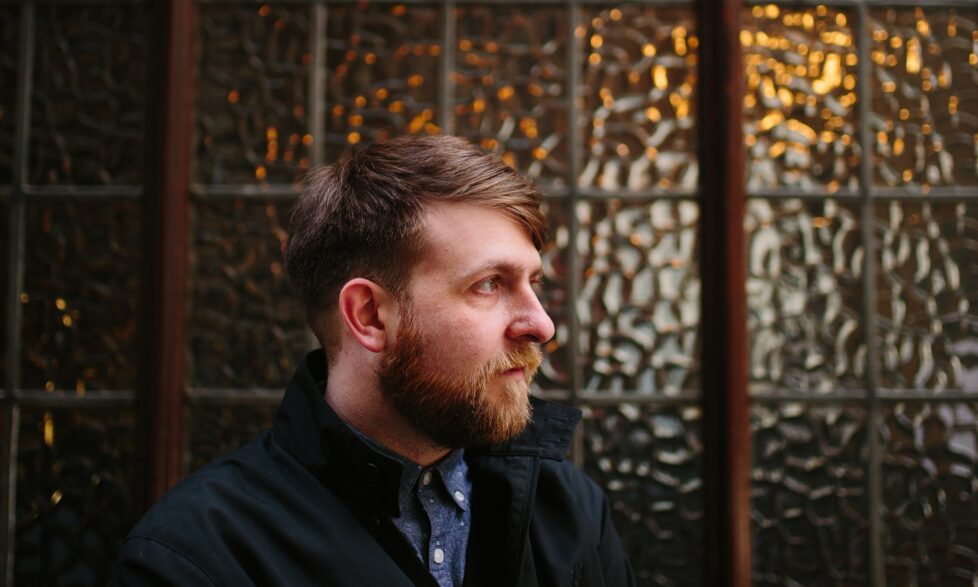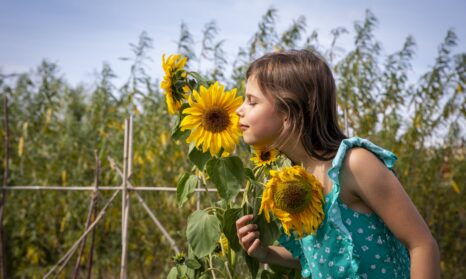Going places: our approach to sustainable places needs more nuance
David Lomax is an architect with 15 years’ experience in housing and housing-led master planning. He’s a Senior Associate at Waugh Thistleton Architects where he led the design and delivery of the world’s largest cross-laminated timber building. In 2018, Waugh Thistleton’s Bushey Cemetery near Watford was a runner up in the prestigious Stirling Prize for ‘building of the year’.
Could you tell me a bit about your story and why you’re interested in sustainability?
It’s kind of an accident! If you’d asked me seven years ago what I thought about sustainability in the built environment, I’d have said I thought about it as something you have to do but it wasn’t particularly interesting. Like building toilets – they’re essential but few want to spend their lives designing them.
Then I found myself in an unfulfilling job. I felt like a machine trying to extract cash from big developers. I didn’t feel as though I was contributing anything.
Things changed when I walked through the door at Waugh Thistleton. I was just looking for work, but what I found was a community of people who were absolutely galvanised behind the idea that we had to do something different.
They told me about their own epiphany. They’d been sitting there actually working on toilets, choosing slightly trendier urinals for a bar in Shoreditch, and thinking: “surely, there’s got to be something else?”
And there was. But their big question was how to create sustainable change that didn’t ‘tip the seesaw’ – solving one problem but exacerbating another.
So, we’ve worked to go above and beyond what we’re asked to do as architects by governments and statutory regulations. It’s infectious. You find yourself in a community of people driven to make change and do the opposite of that unfulfilling job I had. The one that said: “hey, build a few more of those boxes for me and extract a bit more cash out of the system.”
I think one moment of revelation for me was the first time I spoke publicly about our work. When you’re sat in front of a computer tackling the latest crisis or meeting a deadline, it’s easy to forget that you’re doing something special or interesting.
But the moment you step outside your little bubble and talk to other people is when you realise just how important and exciting working for sustainability is, because it’s not on everyone’s radar.
What do you see as the biggest opportunities and challenges for the built environment sector?
When clients come to me, they aren’t necessarily passionate about sustainable buildings so their question is ‘what do I have to do?’ The driver behind this, understandably for their business, is money – they have a budget and they need to see a return.
But if the public are engaged, as we have begun to see with Extinction Rebellion and other climate change protests, it creates a market for sustainability. People are going to the companies that own their offices and build their homes asking what the space does that’s better than the one down the road.
For example, we’re working with co-working office providers. They have a different market compared to how offices were let five years ago - their clients can move around every six months or so. These clients want to know what it is about a space that will keep them there. This conversation often comes back to: “is our space sustainable, is it beautiful, is it natural?”
This means that companies that were less engaged with sustainability are starting to value it financially. The bubble I was talking about is getting bigger every day.
In terms of the challenges, it’s disappointing that the “what do I have to do?” question was removed from government policy. There is no code for sustainable homes. That’s a threat because people who do not see the value will not do it by default.
But interestingly, buried in there is another opportunity. When football was invented there wasn’t a line around the edge of the pitch. People were doing all sorts of crazy things – running 200m off in the distance. So, they drew a line and we’ve spent 100 years arguing whether the ball has crossed it or not.
When you devolve our sustainability responsibilities to a prescriptive list of things - you will only use certain materials and do things one way - it can stifle innovation and lead to inappropriate responses. While we don’t want people running 200m off into the distance, we also don’t want to enforce a line that is quite clearly in the wrong place for some projects and products.
There’s opportunity embedded in the challenge of having no legislation to create responses that are relevant to every individual project. For example, I do design review for Southwark Borough Council and they’re very keen, as many boroughs are, on dual-aspect homes. They won’t accept north-facing homes.
While we shouldn’t be building all homes north-facing, sometimes it might be the right or only choice for that project. I’ve lived in a south-facing single aspect home and I can tell you it’s a lot worse than living in a north-facing single aspect home because it’s easier to heat than cool down.
In fact, if we only have homes that face in one direction as the climate warms up, we’re going to have issues. But we have this headline-esque attitude where we decide something is always bad.
So, while engaging clients and a government that isn’t leading by example are challenging, all I see are opportunities to do things in a better, more nuanced way.
Engaging clients and a lack of goverment legislation are challenging. But all I see are opportunities to do things in a better, more nuanced way
What do you think about sector-wide responses to the climate emergency, like Architects Declare?
Historically, the architect sector has been atomised in many senses. There’s a real benefit to us acting in a collegial way, so Architects Declare could be powerful in lobbying for change.
One example of the need for collegial action is the way we do fees - there is always someone who will do it cheaper. I recently saw a firm offering to do a sustainability assessment and carbon profile alongside every project for free.
To me, that is bonkers. Those things have value and the only way we can ask people to pay for these crucial services is to act as a whole and say: “we think this is important and we should all charge money for it.” If all our businesses go bust, none of us can be agents for change in the built environment.
We don’t want to go down the road, however, of ending up with 100 small groups all saying subtly different things pointing in different directions. We need to watch out for this and challenge it. Finding opportunities to move as one is incredibly powerful - all engaging with our clients in the same way.
One last thing on this – architects are notoriously phobic about acknowledging failure. And it’s understandable in our sector. If you make a bad handbag, that’s the end of it but if you make a bad building that costs £100m and fails to meet its brief, of course you don’t want to talk about it.
But procuring, designing and constructing buildings is an incredibly complex process. Everyone has a million different levers to pull to get it funded, and have it do everything we need and want it to.
When we can’t achieve all this, we must stop hiding it. We need to share with our peers what was achieved, what the learning opportunities are and the conversation we had with our client. We shouldn’t expect perfection, but we should be able to show what we did to make the building better than it would have been without us.
We need to act as one and avoid a “holier than thou” approach of assuming that because not all things were done, then it has no value. We aren’t going to move at any pace if we wait for the magical solution.
What changes would you encourage other businesses to make?
The two biggest things are those I mention above - admit fallibility and work together.
It’s also vital that we seek change with our clients. When I first came to Waugh Thistleton, we spent a lot of time telling clients what they should do in terms of sustainability. It was a battle. We had to work out how to value it so they wanted to employ us and not go somewhere that might be cheaper.
Over the last six years, I have seen a fundamental change. 100% of clients are engaged with mass timber and tackling embodied carbon. But the really fascinating shift is that clients are telling us that they’ve heard about something and are asking how they can achieve it.
We need to create passion about sustainability in the people who have real agency – the ones spending the money and delivering the projects. I know this is something that Bioregional is passionate about and that’s why you put your money where your mouth is.
This is the mindset we need – away from “what do I have to do” towards “what can I achieve?”
This distinctive, expert-led process – by which I mean knowledge and consistency guided by the key principles of One Planet Living – is amazing
What do you like about One Planet Living?
Let’s go back to what I was saying about prescriptive standards.
There are a few products in the BRE Green guide that are in no way sustainable products and yet have an A rating. I’m not placing blame - what this illustrates is that when you start drawing lines very prescriptively around what is allowed and what is not allowed, we start to get weird counterintuitive decisions.
What might be right for a vast housing estate because it’s manufactured in the factory next door, might not be right for the small housing estate around the corner where there’s a much more natural product available.
One Planet Living is much more nuanced. You have a series of overarching ideas to audit your proposals against, taking a holistic, bespoke approach to the right decision for this project, in this place, for this community.
You can make an informed decision between the £100 roof tiles made next door that puts money back into the local economy and doesn’t travel too far vs the £5 roof tiles from Denmark that means you are able to provide the homes at a much more affordable price.
This distinctive, expert-led process – by which I mean knowledge and consistency guided by the key principles of One Planet Living – is amazing because we can unpick accidental bad decisions. The human perspective is also powerful because we can see things a spreadsheet wouldn’t catch.
What do you think other people in the sector can do to show leadership?
It’s about people with agency using that agency. As architects, we have a lot of opportunity to push our clients hard. In Architects Declare we’ve talked about having terms and conditions for our clients stipulating that we will challenge them, working in a particular way and they shouldn’t be surprised when this happens!
But ultimately, real leadership comes from those who are involved from the first blank page of a project. When someone is purchasing land to build homes, we need them to commit to not buying it at certain prices and borrowing lots of money if it means they can’t achieve sustainability features.
People who have been in the sector for a while can share lessons with younger people who may be sitting across the desk from them right now. Because it’s these young people who will find themselves in the position to influence from the crucial blank first page in five or ten years’ time. Sustainability is a sticking plaster once we have reached the point of deciding what colour the tiles are.
Bioregional and Waugh Thistleton have been working together to create truly affordable, sustainable homes that leave space for wildlife and wilderness through our Bioregional Homes subsidiary.
Check out to use One Planet Living to create sustainable places.







